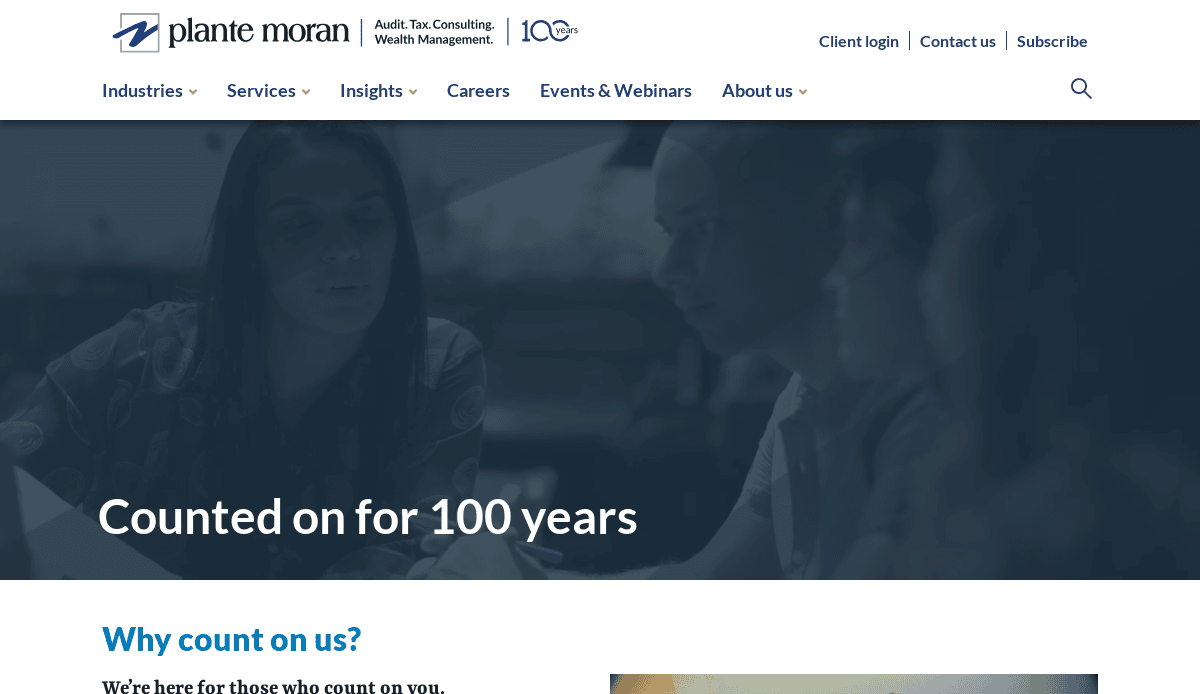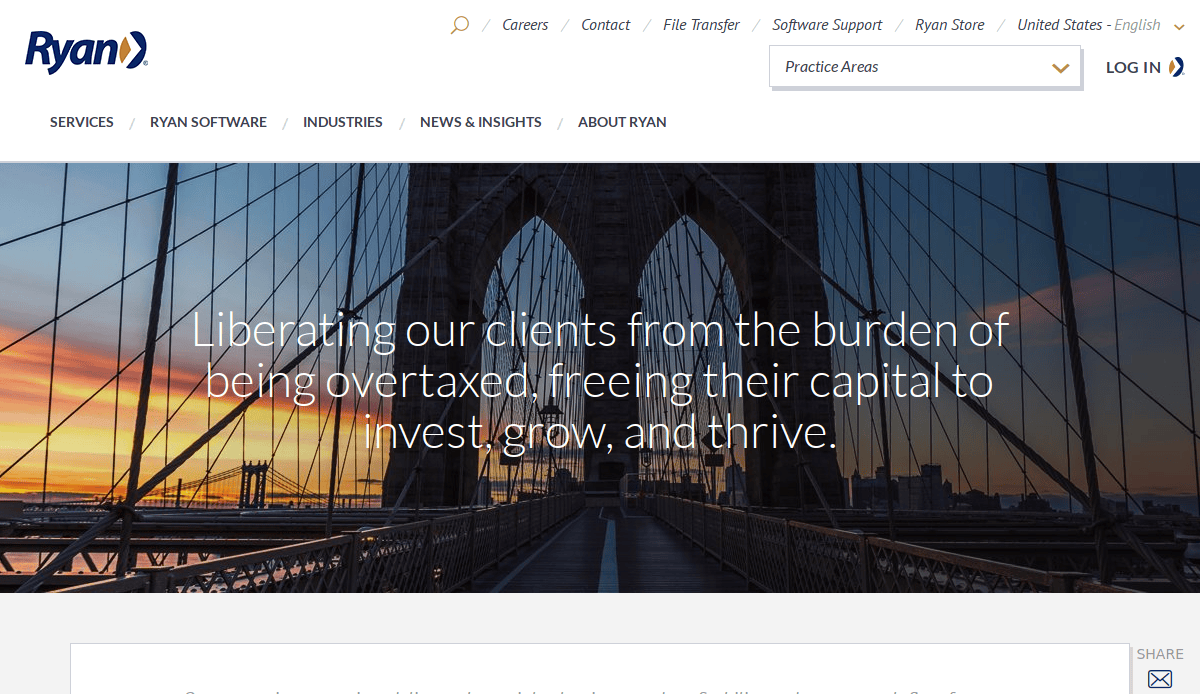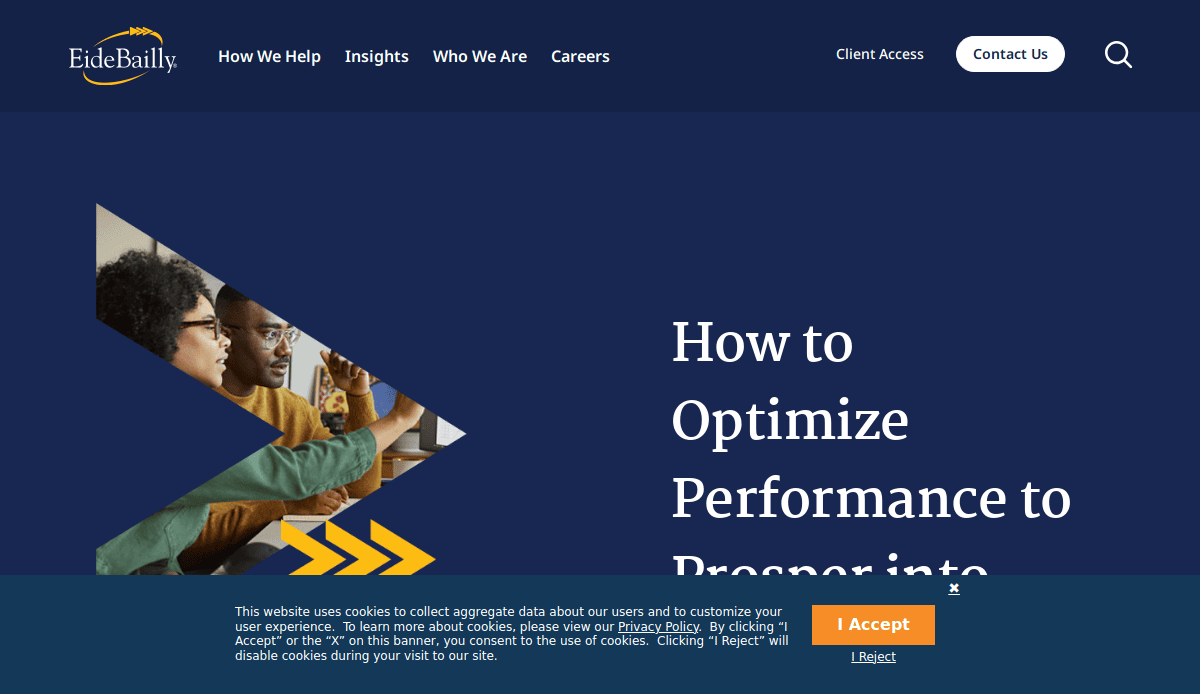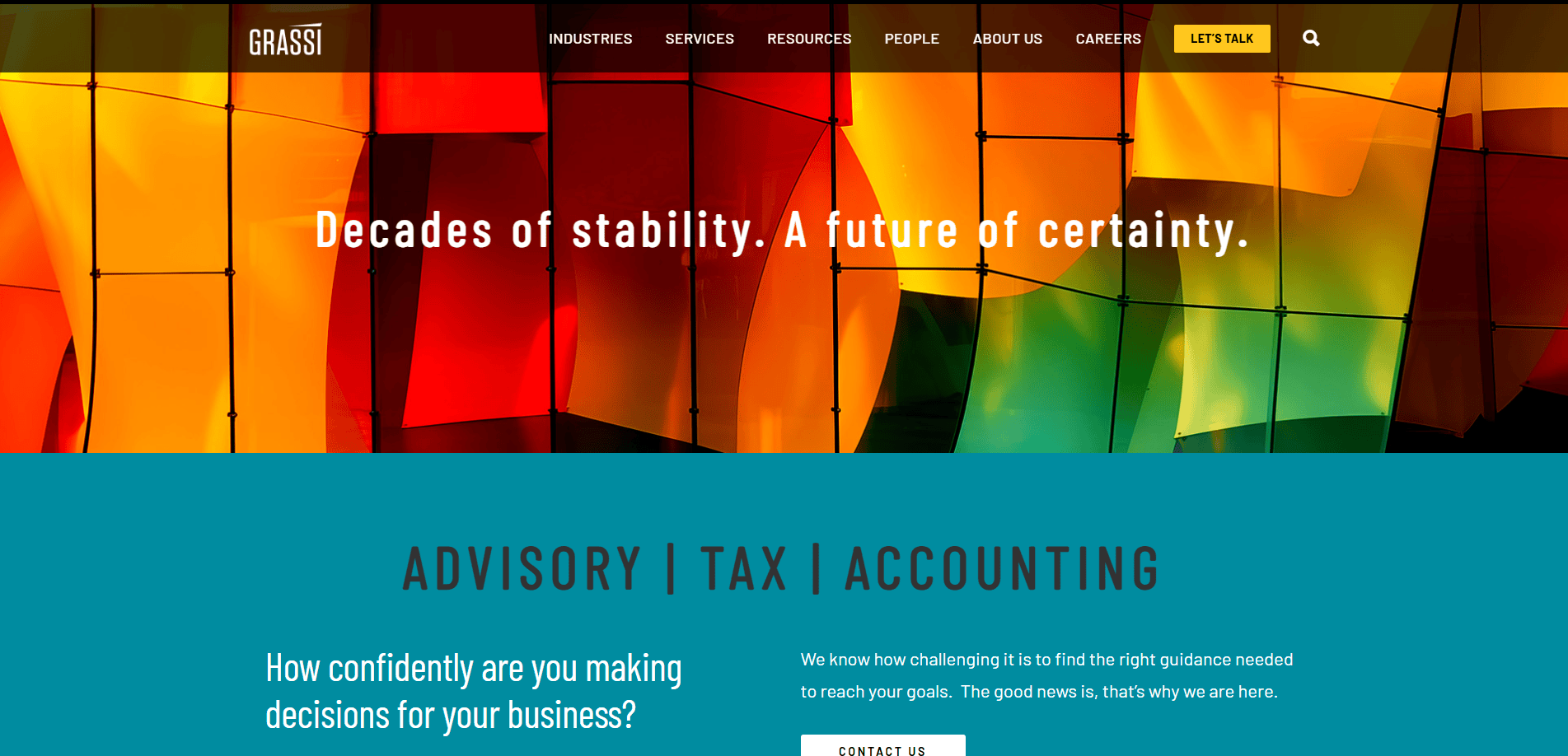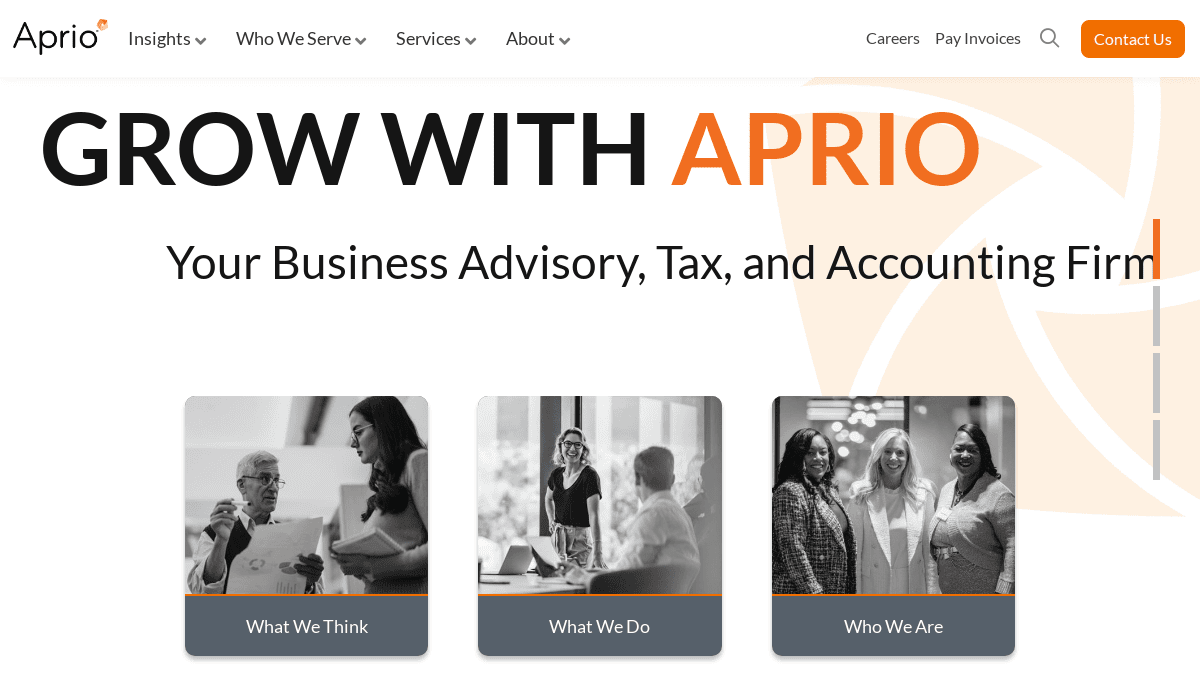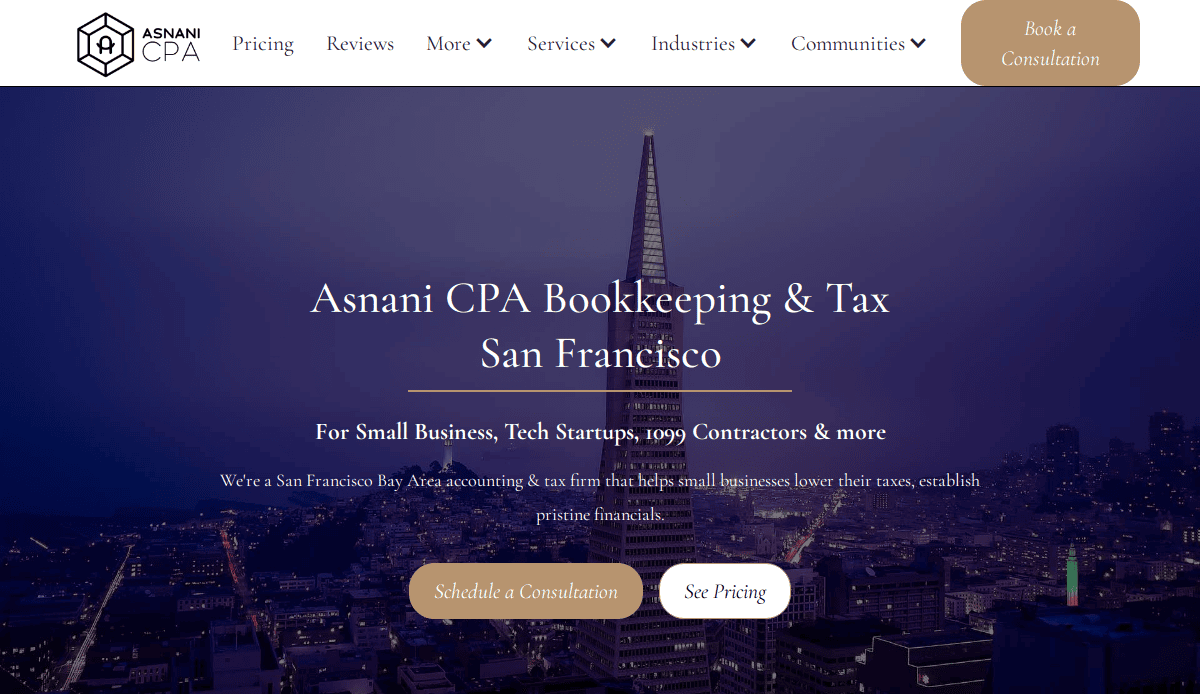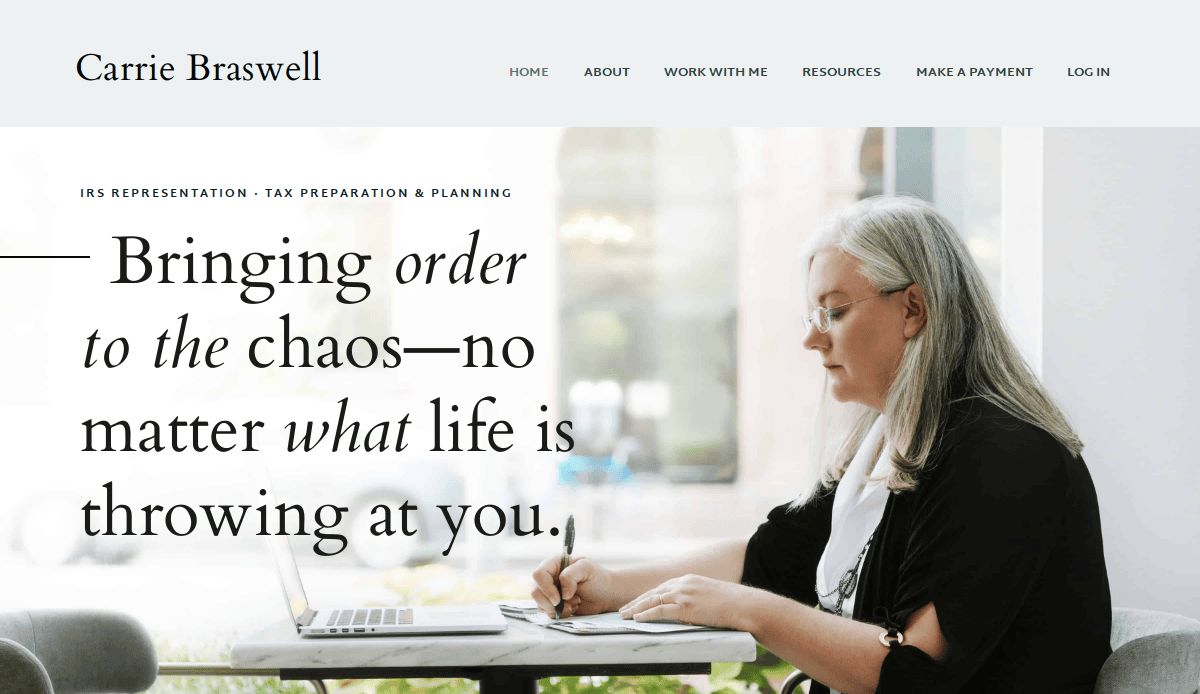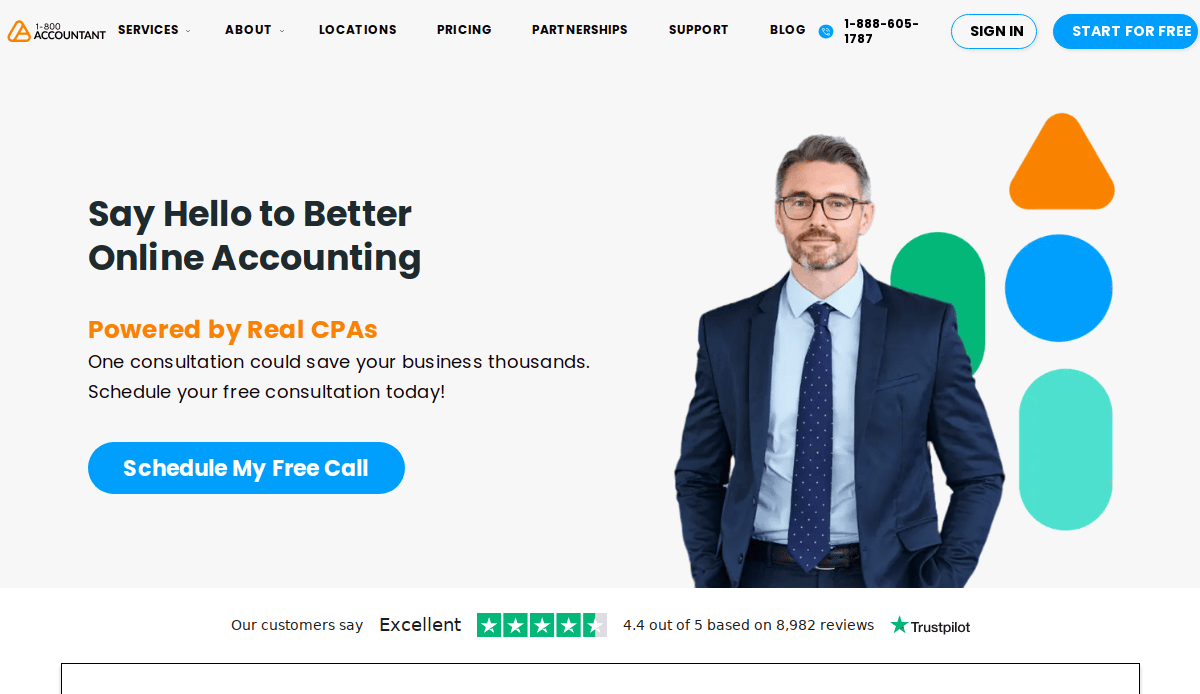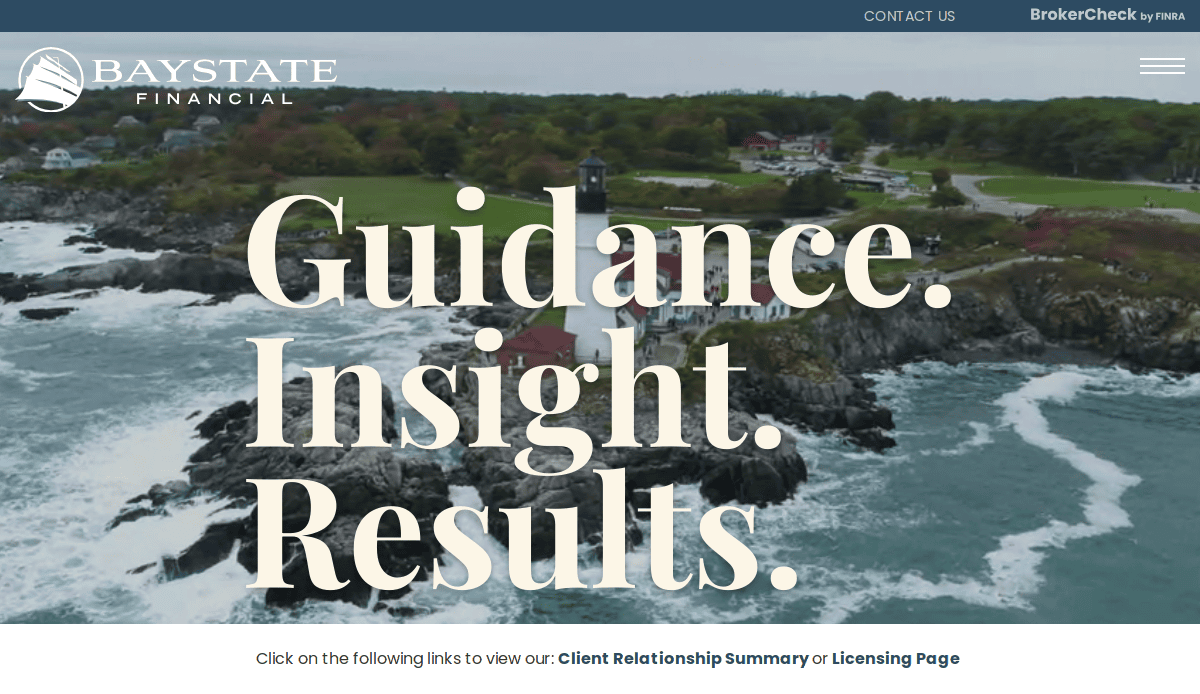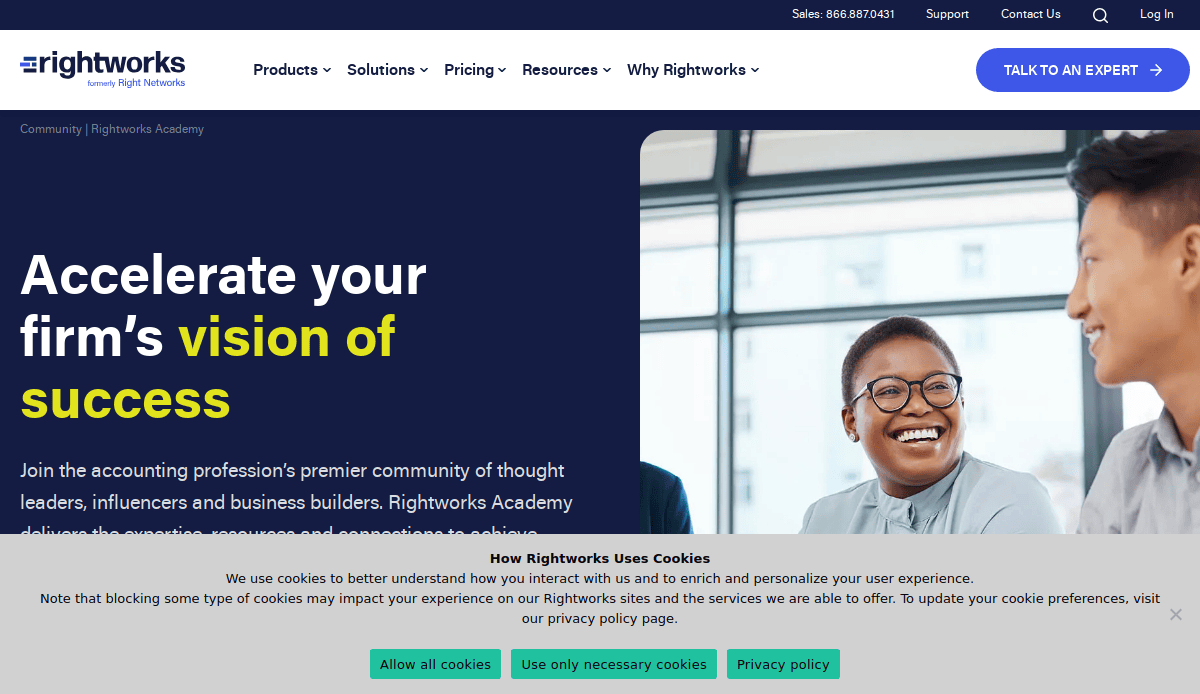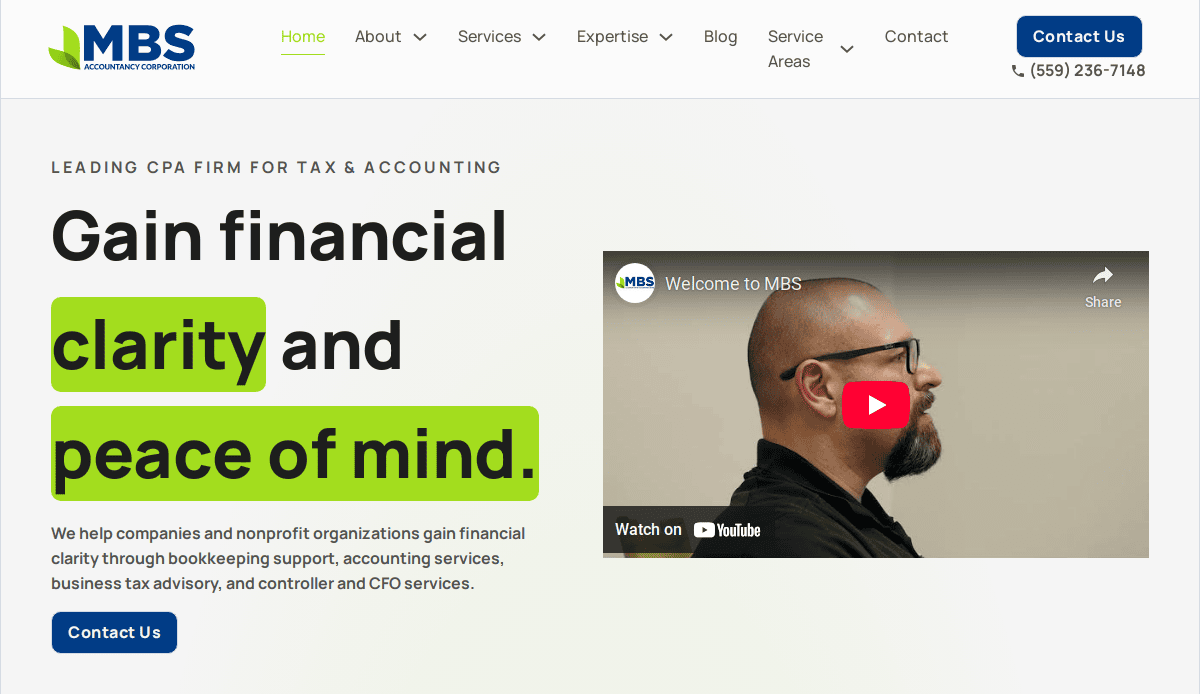Just looking for our Best CPA Website examples list?
Transform Your CPA Website into a Lead-Generating Powerhouse
If you’re running an accounting firm and your website hasn’t evolved in years—or worse, still looks like a spreadsheet—you’re likely losing more than just credibility. A well-designed website isn’t just about aesthetics; it’s about performance, user experience, and converting visitors into long-term clients. In an industry where trust is paramount and competition is one click away, your digital presence should build confidence and deliver results.
Today’s best practices for accounting website design go beyond just looking professional. A custom website tailored to your firm’s unique strengths—paired with smart SEO, compelling copywriting, and streamlined navigation—can dramatically improve your visibility in search engine results and help you connect with potential clients faster. Whether you’re an independent accountant or part of a larger cpa firm, your website should clearly communicate your services, build trust instantly, and support your digital marketing efforts 24/7.
Planning a Website: Purpose-Driven Design That Delivers Results
The planning phase is where a high-performing website begins. For accounting professionals, this stage isn’t about picking fonts or colors—it’s about identifying the firm’s core business goals and aligning every design element with those objectives. Before a single line of code is written, clarity around audience, messaging, and functionality is essential.
A strong planning process begins with defining who the website is for. Is it aimed at local small business owners looking for year-round accounting services? Is it targeting individuals needing tax prep or wealth planning? Understanding the needs, concerns, and expectations of your potential client allows your site to be tailored to their decision-making journey. This is especially important for accounting firms whose credibility is often judged by how clear, professional, and trustworthy their online presence feels.
Next comes mapping the customer journey—from the first visit to conversion. What questions are site visitors asking? What pain points are they trying to solve? The planning stage must include detailed strategies for how content, layout, and structure will guide visitors toward key actions like scheduling a consultation or downloading a tax checklist. This is the time to outline which core pages are needed and how they should be prioritized.
For growing professionals, trust and clarity are everything. That’s why your planning phase should also account for testimonials, case studies, and social proof placements early in the process. These elements don’t just get added later—they should be integrated intentionally, reinforcing credibility where it matters most.
Whether you’re building your first site or redesigning a dated one, foundational decisions made during planning will directly impact performance, SEO, and lead generation. To ensure nothing is overlooked, it’s worth reviewing the core principles of web design to make sure your strategy is grounded in proven best practices. A well-planned website should be working for your business every single day.
Design Principles That Make or Break a Successful Site
A well-structured website design builds trust, drives conversions, and aligns seamlessly with the goals of your firm. For certified public accountants and accounting firms, website design must balance professionalism with clarity, delivering a user-friendly experience that removes confusion and builds credibility. When potential clients find your website, the first few seconds determine whether they stay or bounce. That’s why the visual and functional design of your site must be intentionally crafted with key principles in mind.
The first principle is clarity. A clutter-free layout that prioritizes essential information helps your audience focus on what matters: your services, your value, and how to contact you. A successful website should avoid overwhelming visuals or vague messaging. Use consistent branding—fonts, colors, and iconography—that reinforce your identity across every page. Visitors shouldn’t have to guess who you serve or what problems you solve.
Navigation must be simple and intuitive. This isn’t just a convenience—it’s a trust factor. If users can’t quickly find tax tips, your services guide, or how to reach your team, they’ll assume the rest of your firm’s processes are just as unclear. Menus should be organized based on client needs, not internal jargon. Calls-to-action (CTAs) like “Schedule a Consultation” or “Request a Free Assessment” should appear naturally at key moments on each page.
Responsiveness is non-negotiable. With so many people browsing from mobile devices, your website design must perform flawlessly on all screen sizes. Mobile responsiveness doesn’t just improve usability—it also impacts your search rankings and overall SEO performance. Design for accessibility as well, ensuring that your site accommodates users with visual or motor impairments.
Visual hierarchy matters too. A strategic layout guides users’ eyes from headlines to body text to CTAs, helping them move through your site efficiently. Use whitespace strategically to give elements room to breathe, and place testimonials or trust indicators where they will be seen without being distracting.
Another core design principle for accountants and CPA firms is integrating content with purpose. Your website isn’t just a brochure—it’s a tool. Service descriptions, blog posts, and downloadable resources should be structured in ways that help educate and qualify prospects. This is where thoughtful design and development come into play—combining strategy, content, and aesthetics to serve real business goals.
In a competitive industry like this, many accounting firms miss the mark by treating their website like a one-time project. But a strong website evolves alongside your firm. As you expand services or adopt new technologies like accounting software integrations or secure client portals, your design should reflect those changes. Whether you’re starting from scratch or updating your website, adhere to best practices and opt for a custom website that meets the specific needs of your business, not a generic accountant website template that blends in with the rest.
Ultimately, effective web design supports both function and perception. It reassures prospects that your team is capable, detail-oriented, and up-to-date. And in an industry where trust is everything, that’s not a luxury—it’s a necessity.
Structuring Content and Navigation for High-Impact Websites
When it comes to web design, how you structure your content and navigation directly affects whether visitors stay, engage, and ultimately convert. Accountants and CPA firms need websites that are easy to explore, quick to answer questions, and organized in a way that builds trust. If users feel lost or overwhelmed, they’ll click away—and take their business with them.
Start with a clear hierarchy. The homepage should serve as a quick summary of your value proposition, service categories, and next steps. Visitors should instantly understand who you are, what you offer, and how to take action. That’s why the top-level navigation must be limited to essential categories like Home, About, Services, Resources, and Contact. These sections guide the user journey and help search engines index your site effectively.
Each primary section should then branch into intuitive subpages. For example, under Services, create separate pages for Tax Preparation, Bookkeeping, Business Advisory, and other core offerings. This allows you to target specific keywords, speak directly to unique pain points, and clarify the value of each service. Avoid vague page titles like “What We Do”—be specific. Your clients are scanning for answers.
Content itself should be scannable, benefit-driven, and client-focused. That means using short paragraphs, bullet points, and subheadings to improve readability. Break up large blocks of text and emphasize clarity over complexity. Prospects are often seeking fast answers, not dense explanations. Use your content to solve problems and communicate outcomes, not just list features.
Visual structure plays a role, too. Use callouts to highlight trust indicators like credentials, testimonials, or recognitions. Strategically place calls-to-action throughout your site—not just at the bottom of pages—to keep visitors moving toward conversion points. Consider creating pillar pages for high-value services that link to more detailed subtopics, providing both a better user experience and a stronger internal linking structure.
Strong navigation also means eliminating dead ends. Every page should lead somewhere—whether it’s to a contact form, a relevant blog post, or a downloadable resource. These paths help keep visitors engaged and lower your bounce rate, while also boosting SEO authority across your site.
If you’re not sure how to best structure your site’s layout or menu options, this website organization guide can help clarify best practices. It walks through how to map content for usability and performance, which is especially useful for accounting professionals balancing multiple service lines and audience segments.
Above all, your navigation and content structure should serve your audience’s expectations. Think like a potential client: what are they looking for, and how quickly can they find it? An accountant’s website isn’t just a digital brochure—it’s a guided experience. Done right, it becomes a reliable asset that attracts, educates, and converts new business for your firm.
The Role of Visual Elements in CPA Site Design
In the world of accounting, trust is everything, and visual elements play a surprisingly powerful role in shaping that perception. On a CPA firm website, the right use of imagery, layout, and design enhances the UX and reinforces your brand’s professionalism, reliability, and expertise.
Start with photography. Avoid generic stock images whenever possible. Instead, opt for authentic photos of your team, office, or client interactions. These humanize your brand and make you more approachable, especially for small businesses or individuals looking for a trustworthy accountant. If custom photography isn’t feasible, choose stock photos that align with your brand’s tone—clean, professional, and free of gimmicks.
Color is another vital visual tool. A well-chosen palette helps guide the user’s attention and creates consistency across your site. Blues, grays, and neutrals are popular in accounting websites for good reason—they communicate stability, intelligence, and integrity. Use accent colors sparingly to highlight calls-to-action or key messages without overwhelming the visitor.
Typography matters more than many firms realize. Fonts should be legible across all devices and screen sizes. Stick to a modern sans-serif for headings and a clean serif or sans-serif for body text. Consistent use of font sizes and styles reinforces hierarchy and ensures that important information doesn’t get lost. Remember: readability equals trust.
Layout and whitespace are foundational to usability. A cluttered interface confuses users, and it signals disorganization. A well-structured layout with ample breathing room helps users focus on your message. Use section breaks, visual dividers, and cards to organize content and create a smoother flow across the site. Each element should serve a purpose and help move the user forward.
Icons and infographics also play an important role. They can quickly communicate complex services like tax planning, business advisory, or payroll support without relying on long paragraphs. Visual shorthand like this is particularly helpful for first-time visitors who are browsing multiple CPA sites and need to absorb information quickly.
Video is becoming increasingly effective as well. A brief welcome video from the founder or a testimonial reel from clients builds connection and adds personality to the experience. It’s not about production value—it’s about relatability. A short, well-lit video with clear audio can humanize your brand far more than another paragraph of text.
Finally, ensure all visual elements are optimized for performance. Large, uncompressed images slow down your site, which harms both UX and search engine rankings. Balance quality with speed to keep your site accessible and responsive.
Effective use of visual elements communicates more than just style—it sends a clear message: “We’re professionals who pay attention to detail.” In a field like accounting, that message can be the difference between a lost lead and a new client.
Ongoing WordPress Maintenance
Building a website is just the beginning—ongoing maintenance is what keeps it secure, functional, and performing well over time. For accounting firms that rely on their website to attract clients, provide information, and support their brand, WordPress maintenance isn’t optional—it’s a core part of your digital strategy.
Regular updates are the foundation of WordPress upkeep. That includes keeping the core platform, plugins, and themes up to date to prevent compatibility issues and security vulnerabilities. Hackers often target outdated websites, and even a short period of neglect can expose sensitive information or cause unexpected downtime. In a trust-driven industry like accounting, a compromised site can do serious damage to your reputation.
Backups are equally critical. A proper maintenance plan ensures that your entire website is backed up regularly, allowing for quick recovery if something goes wrong. Whether it’s a plugin conflict or accidental content deletion, reliable backups protect your data and reduce the risk of extended outages.
Performance optimization is another key aspect of ongoing maintenance. Slow-loading pages frustrate users and hurt your rankings in search results. Ongoing monitoring and optimization of your WordPress site—including image compression, database cleanup, and caching—keeps your site running smoothly. This directly impacts UX and helps ensure your CPA firm remains competitive online.
Security monitoring adds another layer of protection. A well-maintained WordPress site includes firewalls, malware scans, and login protection to guard against brute force attacks and unauthorized access. When you’re managing financial data, maintaining trust with your audience means demonstrating that your site is safe and professionally managed.
In addition to the technical elements, content maintenance matters too. Services evolve, team members change, and tax laws shift. A stale or outdated site signals inattention, while a consistently updated website reinforces professionalism. Regular audits to review and revise service pages, staff bios, and blog content help keep your online presence aligned with your actual business.
For accountants and CPA firms, WordPress maintenance ensures your website supports—not hinders—your operations. It allows you to stay focused on client service, knowing that your online presence is secure, fast, and up to date. Instead of waiting for something to break, a proactive maintenance strategy ensures your site stays as dependable as your firm.
20 CPA Website Design Examples to Inspire
Here are 20 standout industry websites, each demonstrating effective design principles tailored for accounting professionals.
1. Deloitte
Location: New York, NY
Key Takeaways:
- Clean, modern design with intuitive navigation.
- Emphasis on thought leadership through organized content.
- Consistent branding with signature colors.
2. KPMG
Location: New York, NY
Key Takeaways:
- Clear navigation menus and well-organized content.
- Light and inviting color palette.
- Homepage directs clients to insights, industries, and services.
3. Ernst & Young (EY)
Location: New York, NY
Key Takeaways:
- Editorial content focus targeting enterprise and mid-level businesses.
- Magazine-like feel enhancing expertise perception.
- Tabbed content for service lines and industries.
4. PricewaterhouseCoopers (PwC)
 Location: New York, NY
Location: New York, NY
Key Takeaways:
- Heavy focus on editorial content marketing for SEO.
- Large navigation flyouts organized by services and clients.
- Distinctive color scheme with pops of red.
5. Marcum LLP
Location: New York, NY
Key Takeaways:
- Professional design with large flyout menus detailing services.
- Thoughtful animations enhancing user experience.
- Consistent color scheme for easy readability.
6. Plante Moran
Location: Southfield, MI
Key Takeaways:
- Emphasis on culture and values throughout the site.
- Comprehensive service listings with detailed descriptions.
- User-friendly navigation highlighting firm’s expertise.
7. Cherry Bekaert
Location: Raleigh, NC
Key Takeaways:
- Modern design with clear calls-to-action.
- Strategic rebranding enhancing user engagement.
- Detailed service pages catering to various industries.
8. Ryan LLC
Location: Dallas, TX
Key Takeaways:
- Professional layout with easy navigation.
- Clear presentation of tax services and consulting expertise.
- Engaging content highlighting firm’s achievements.
9. Eide Bailly LLP
Location: Fargo, ND
Key Takeaways:
- Clean design emphasizing the firm’s history and values.
- Comprehensive service offerings with detailed explanations.
- User-centric navigation facilitates easy access to information.
10. Grassi & Co.
Location: Jericho, NY
Key Takeaways:
- Modern design with emphasis on client industries.
- Detailed service pages tailored to specific sectors.
- Interactive elements enhancing user engagement.
11. Aprio
Location: Atlanta, GA
Key Takeaways:
- Sleek design with intuitive navigation.
- Comprehensive service listings across various industries.
- Engaging content showcasing firm’s growth and expertise.
12. Asnani CPA
Location: Los Angeles, CA
Key Takeaways:
- Clean, modern design aesthetic.
- Clear call-to-action buttons guiding visitors.
- Concise presentation of services offered.
13. Carrie Braswell CPA
Location: Austin, TX
Key Takeaways:
- Minimal color palette showcasing the message.
- Client-focused navigation for file sharing and payments.
- Empathetic and clear copywriting
14. Belay Solutions
Location: Atlanta, GA
Key Takeaways:
- Modern and minimal website design.
- Well-organized content with streamlined graphics.
- Easy navigation enhances user experience.
15. 1-800-Accountant
Location: New York, NY
Key Takeaways:
- Personable graphics making the site approachable.
- Clear step-by-step instructions for lead generation.
- Easy-to-spot contact options.
16. Baystate Financial
Location: Boston, MA
Key Takeaways:
- Modern design featuring local imagery.
- Sleek animations enhancing visual appeal.
- Professional layout with clear service offerings.
17. Rootworks
Location: Bloomington, IN
Key Takeaways:
- Community-oriented website design.
- Unique homepage layout with content buckets.
- Comprehensive resources for accountants.
18. Avalon Accounting
Location: Vancouver, WA
Key Takeaways:
- Sleek and up-to-date design.
- Modern vibe resembling a SaaS website.
- Prioritization of client experience.
19. MBS Accountancy
Location: Fresno, CA
Key Takeaways:
- Attention-grabbing homepage with staff images.
- Welcoming and friendly design.
- Clear presentation of services and specialization.
20. DarkHorse CPA
Location: San Diego, CA
Key Takeaways:
- Innovative design with hero video and animated logo.
- Engaging content including blog, vlog, and podcast.
- Full bios for every team member enhancing transparency.
These examples showcase a range of effective design strategies tailored to the accounting industry, from clean and modern aesthetics to engaging content and user-friendly navigation.
Ready to Elevate Your Site Design Strategy as a CPA?
If your firm’s website isn’t bringing in leads, showcasing your professionalism, or clearly communicating your accounting services, it’s time to make a change. A strategically built website is your most important business development tool. Whether you’re starting fresh or rebuilding an outdated site, investing in industry-specific website design tailored for CPAs and accountants ensures you’re building on a foundation designed to convert.
From user-friendly design and optimized navigation to targeted SEO and thoughtful branding, every piece of your accounting firm’s website should serve a purpose. If you’re ready to build your accounting website the right way—with a trusted team that understands how to blend design for accountants with business results—our experienced pros are here to help.
Get your custom CPA website strategy and turn your website into a powerful, client-generating asset.
Frequently Asked Questions About CPA Website Design
What makes websites for accountants different from other business websites?
Websites for accountants need to emphasize clarity, trustworthiness, and compliance. Unlike retail or entertainment websites, an effective accountant website focuses on building trust with visitors, clearly explaining accounting services, and making it easy to take the next step. The design should guide website visitors through relevant information efficiently while showcasing the firm’s credibility.
How can I create a website that attracts the right clients?
To create a website that draws in your ideal audience, start with a strong content strategy and a user-focused layout. Use messaging that reflects the specific services and includes localized content for better search visibility. A well-planned structure, fast-loading pages, and clear calls-to-action are all essential to attracting and converting business CPA prospects.
What should a CPA include on their website?
A CPA’s site should include service descriptions, team bios, a contact page, FAQs, and industry-specific content such as tax tips and planning guides. Including trust elements like client testimonials, certifications, and a professional tone throughout the website’s design helps enhance credibility and keeps users engaged.
Can I use a website builder, or should I hire a website developer?
While a website builder may be suitable for basic DIY websites, firms that want to stand out typically opt for custom website design. A website developer can implement advanced tools, optimize performance, and build a secure, scalable site that supports your long-term goals. For growing accounting and CPA firms, custom development ensures the site reflects the firm’s professionalism.
What are some design tips for accounting firm websites?
Use a clean layout, limit distractions, and apply consistent branding throughout the site. Include intuitive navigation, scannable content, and multiple ways for users to contact you. Effective design tips also include using professional photography, implementing mobile-friendly layouts, and ensuring accessibility standards are met.
How often should an accounting firm update its website?
Your accounting firm’s website should be reviewed quarterly and updated at least once or twice per year. Frequent updates to service offerings, blog content, and compliance messaging improve SEO and demonstrate that your firm is active and engaged with its clients and industry.
Is there a guide for accounting firms building their first site?
Yes, following a step-by-step guide for accounting firms helps align your site’s purpose with your goals. This includes defining your target audience, mapping key pages, selecting the right accounting content, and using analytics to track performance. A comprehensive guide should walk you through each phase of website design and development, from planning to launch.
How do plugins or tools improve performance?
Plugins or tools like appointment schedulers, client portals, calculators, and secure document upload features add significant value to the user experience. These utilities help tax accountants serve clients more efficiently while also differentiating your site from basic, template-driven alternatives.
What makes a website solution effective for a business CPA?
A strong website solution for a business CPA includes more than just design—it integrates SEO, security, performance optimization, and client engagement features. An effective solution aligns your online presence with your business goals, supports growth, and offers the flexibility to evolve as your practice expands.
Why is professional site design critical in a state CPA environment?
In a competitive state CPA landscape, professional website design is expected. A standout website communicates your authority, supports compliance requirements, and demonstrates your firm’s commitment to quality. With many users researching accounting services online before ever making contact, the impression your site makes can define whether you gain or lose a client.





